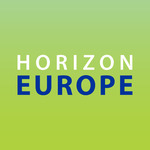Responsable
The Applied Mechanics and Bioengineering Group - AMB- (T24-17R) is one of the research groups of the Biomedical Engineering Division of the Aragon Engineering Research Institute (I3A). The main objective of the group is the development of technologies applicable to personalized medicine in order to improve diagnosis and possible treatments. This research is framed in the field of engineering and its application to life sciences and has been organized based on the following sub-lines:
- Development of numerical-experimental models of the cardiovascular system. The objective is the computational simulation of the vascular and cardiac tissue and its interaction with devices. These models have been calibrated and validated thanks to the tests carried out in the Tissue Characterization Laboratory. Behavioral models of the vascular wall have been developed as a simulation of the fluid-structure interaction phenomenon, as well as the tissue-implant interaction. The main objective is the study of cardiovascular pathologies (onset, progression and rupture of atheroma plaque, thrombosis, and more recently aneurysm) as an improvement in the design of devices or simulation of surgical techniques.
- Computational modeling of the human eye. In this line of research, the aim is to advance towards the patient-specific numerical modeling of the human eye both in geometry, starting from medical imaging such as topographies, OCT and magnetic resonance, as well as in the mechanical behavior of tissues. These models will allow us to approach the planning of refractive surgeries on the cornea (Lasik, Smile, etc.), the treatment of keratoconus using intrastromal rings or the design of intraocular lenses.
- Development of data-intensive bioengineering techniques (data-enabled bioengineering) that allow effective customization of the methodologies developed in the rest of the group's lines. This line includes aspects related to the use of personalized virtual and augmented reality for pre or intraoperative planning, the development of data-intensive methodologies or the use of artificial intelligence techniques (machine learning) for the personalization of virtual patients (digital twins ).
- Development of biomimetic environments using microfluidic techniques. These techniques make it possible to develop systems that reproduce the cellular microenvironment under physiological or pathological conditions and to study how mechanical, chemical or environmental stimuli affect cell behavior. These devices have already been successfully applied to the study of different tumor populations (glioblastoma, breast or colon cancer), kidney cells, and drug testing, etc. The objective is to develop tools that allow analyzing the efficacy of drugs (typology with patient cells with the aim of personalizing therapies with these drugs.
- Musculoskeletal system. Within this line, different fields of action are proposed, such as the characterization and modeling of the active behavior of muscle tissue, the simulation of abdominal surgeries, foot treatments and tissue regeneration processes.
Along with the research activity, AMB also participates in teaching undergraduate and postgraduate courses at the School of Engineering and Architecture (School of Engineering and Architecture, EINA) of the University of Zaragoza. AMB also actively participates in the Master-Doctorate in Biomedical Engineering.
Reseachers
Permanent
Temporary
Research lines
Projects
PELVIc Floor Evaluation live TRACKing – Real-time prediction of perineal trauma
 ,
, 
Predict and prevent foot pathologies related to hallux limitus and flat feet

In silico models for tendinomuscular injuries analysis using artificial intelligence techniques

In silico framework to improve the personalized prediction of progression and outcomes in thoracic and abdominal aortic aneurysms based on personalized clinical and mechanical biomarkers

Computational modeling of cell culture in dynamically adaptive multilayer microenvironment charged with drug-delivery microcapsules

